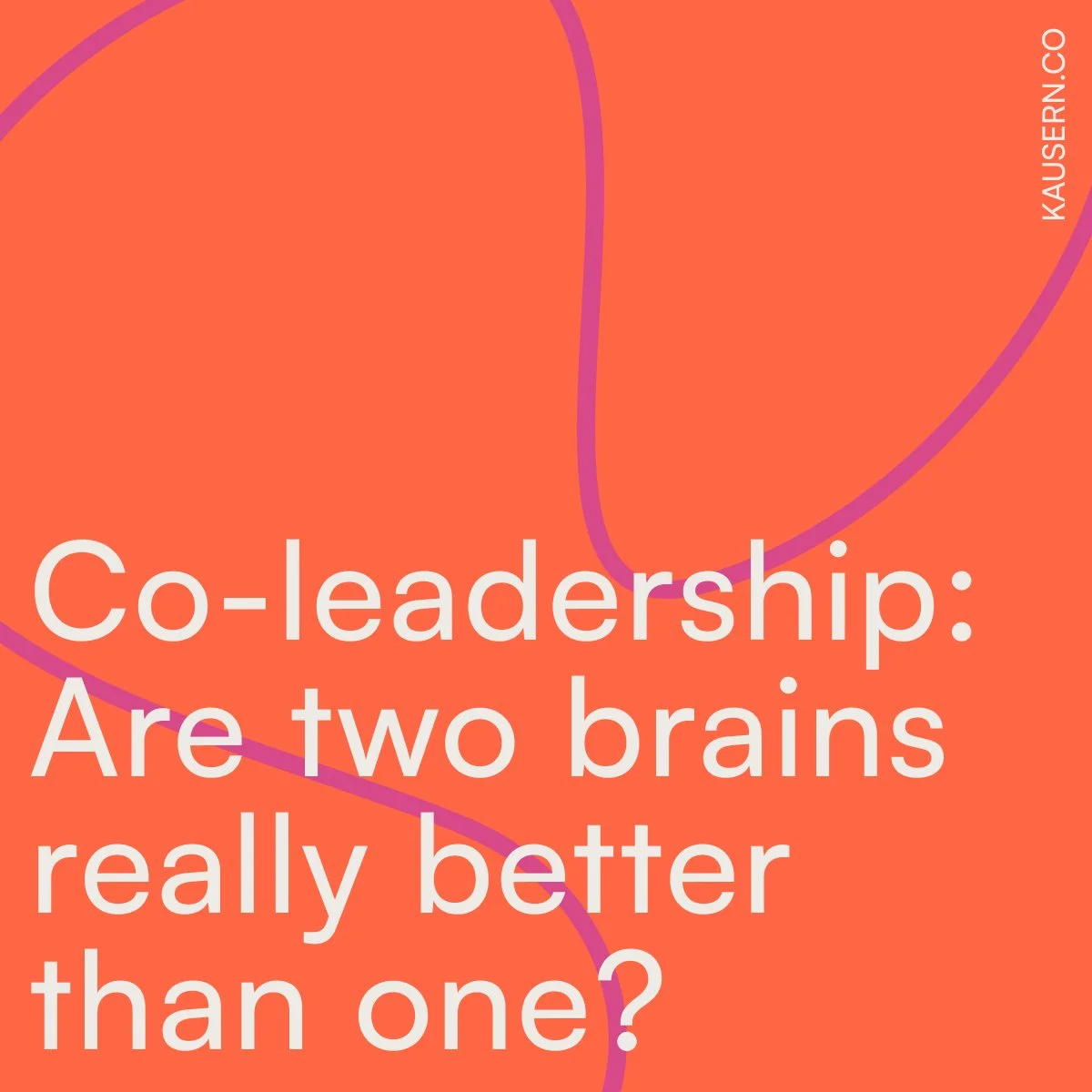Co-leadership: Are two brains really better than one?
The concept of co-leadership sounds good on paper but is not easy to execute. I attempted to raise two seniors to lead a business unit once, but instead of creating better and smarter solutions, I created confusion and tension. There were moments of collaborative brilliance, but it was few and far between.
To find out how to support my co-leaders in a more coordinated, structured, and more effective way, I decided to do a deep-dive into the topic of co-leadership.
First, let’s define what co-leadership is. Co-leadership is when two or more (but usually two) people are put in charge of a team. They share a common team goal, but their roles and responsibilities are clearly divided. Here are a few notable examples of successful co-leadership arrangements:
· Anthony and Joe Russo aka The Russo brothers (dir. Captain America: The Winter Soldier, Avengers: Endgame)
· Ben Cohen and Jerry Greenfield (Ben & Jerry’s)
· John Lennon and Paul McCartney
· Larry Page and Sergey Brin (Google)
· Wilbur and Orville Wright
· Steve Jobs and Steve Wozniak (Apple)
When is co-leadership most useful?
· In large and complex organisations, which require diverse expertise or perspectives
This arrangement brings different and complementary skill sets to the table, resulting in smarter and more creative solutions.
· When the workload is significant and demanding
This arrangement provides mutual support, complementing skills and faster progress.
· During times of major change such as mergers and acquisitions, or senior leadership transitions
This arrangement provides a sense of stability and continuity to the organisation.
· Succession planning
Where a senior leader shares their responsibilities with a potential successor, this arrangement allows for knowledge transfer, skill development, and a smooth transition.
Now that we’ve established when co-leadership can work, let’s talk about its challenges and how to use it to its full potential.
What are the possible challenges of co-leadership?
· Creates ambiguity and confusion
With two people in charge, team members might be confused whose direction to follow, or not know who to approach for their challenges.
· Inefficiency and slower decision making
Reaching a consensus among co-leaders can be time-consuming.
· Power struggles and conflicts
Differences in opinions, personalities, and strategies can lead to disagreements, clashes, or cold shoulders, causing disruptions and negatively impacting team morale and unity.
· Lack of accountability
It may be unclear who is ultimately responsible for specific outcomes or failures.
· Uneven skill sets
Differences in skill sets is a benefit but can sometimes be painfully lopsided, causing a feeling of unfairness and resentment from one of the co-leads.
So how can we co-lead well?
· Define clear roles and responsibilities
Be very clear who does what. Golden rule: the less overlap of responsibilities, the better.
· Complement each other's strengths
Divide responsibilities based on individual strengths, allowing each co-leader to contribute effectively.
· Set clear goals together
Collaboratively define what the finish line looks like. Discuss what wins and losses would look like. The clearer the better.
· Trust each other
Imagine a bus with two steering wheels. If each co-leader were to take one wheel to jointly drive the bus full of people to a common direction, they better trust each other.
· Constantly have open and honest communication
Initiate regular communication with your co-leader and the team members to discuss progress, challenges, and ideas.
· Resolve conflicts promptly and constructively
Don’t avoid conflict - effective conflict resolution can contribute to a much stronger team dynamic.
· Be open to change and feedback
Regularly reflect on and learn from your co-leading experience. Identify areas for improvement and seek feedback from your co-leader and the team members. Having a continuous learning and growth mindset will contribute to your enjoyment and effectiveness as a co-leader.
●

